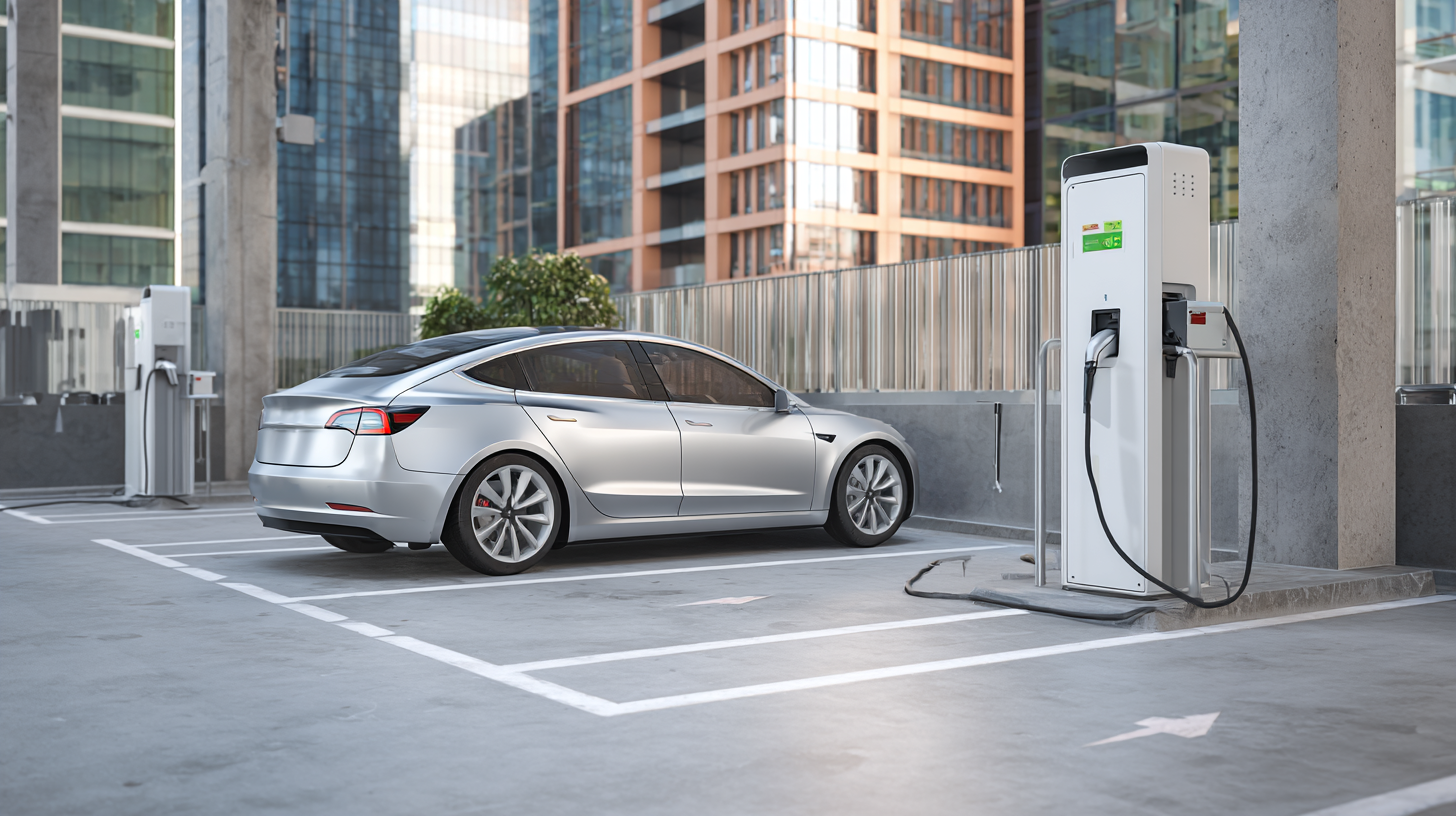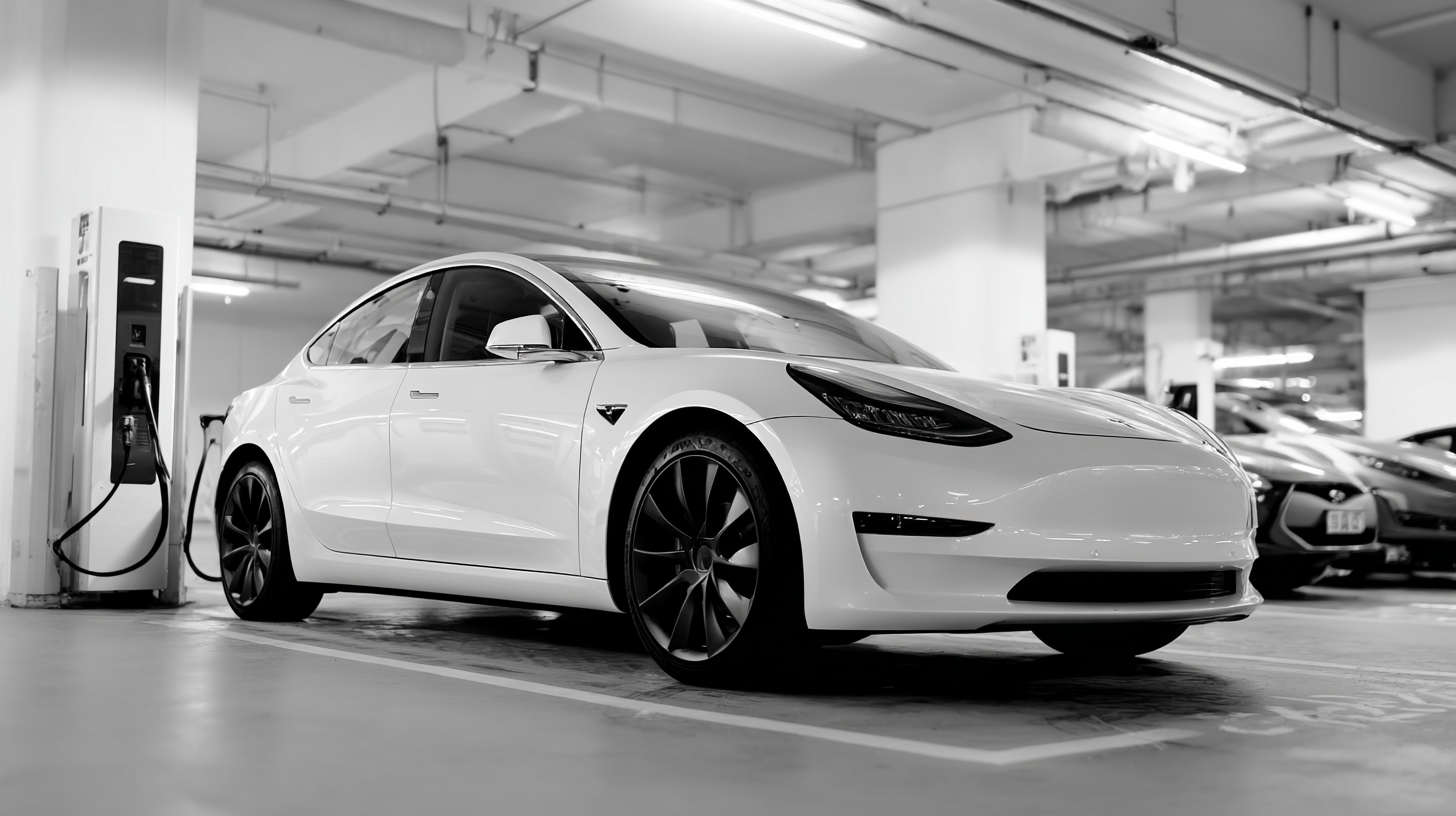As the electric vehicle (EV) market continues to expand, the necessity for efficient and reliable infrastructure grows, particularly in the realm of Commercial EV Chargers. According to a report by the International Energy Agency, global EV sales reached 6.6 million units in 2021, a dramatic increase of 108% from the previous year, indicating a rapidly expanding consumer base.

Projections suggest that the number of publicly accessible EV chargers will need to increase significantly, from 2 million in 2021 to over 10 million by 2025, to meet demand. Choosing the right Commercial EV Charger for your business is not just a matter of sustainability; it's becoming a strategic business decision that can enhance customer experience and operational efficiency.
This blog will explore key trends in EV charging technology, discussing how to select high-quality manufacturers and providing a comparative analysis of various charger types to help businesses make informed choices.
As we look towards 2025, the electric vehicle (EV) charging landscape is poised for significant transformation, driven by emerging technologies. Innovations such as ultra-fast charging and wireless power transfer are set to redefine user convenience and accessibility. Ultra-fast chargers can significantly reduce charging time to mere minutes, making them essential for commercial settings where time efficiency is crucial. Moreover, advancements in battery technology will allow for higher capacity charging stations that can cater to multiple vehicles simultaneously, optimizing fleet operations and enhancing customer satisfaction.
Wireless charging, another exciting advancement, offers the prospect of a truly seamless experience for EV users. With vehicle inductive charging, customers can simply park over a charging pad without the need for cables, streamlining the process. This technology is particularly appealing for commercial enterprises that want to ensure a hassle-free charging experience while boosting vehicle turnover rates. As businesses begin to adopt these technologies, selecting the right commercial EV charger will depend not only on compatibility and charging speed but also on integration with existing infrastructure and the future scalability of energy demands.
| Charging Technology | Charging Speed (kW) | Connection Type | Cost Range ($) | Best Use Case |
|---|---|---|---|---|
| Level 1 Charger | 1.4 - 2.4 | NEMA 5-15 | 300 - 600 | Home & Small Businesses |
| Level 2 Charger | 3.7 - 22 | NEMA 14-50, Type 1/Type 2 | 1,200 - 5,000 | Commercial & Public Use |
| DC Fast Charger | 50 - 350 | CHAdeMO, CCS | 10,000 - 40,000 | High Traffic Areas & Fleet |
| Wireless Charging | 3 - 10 | Inductive Coupling | 5,000 - 25,000 | Convenience Charging |
| Smart Chargers | 7.2 - 22 | Wi-Fi, Ethernet | 2,000 - 10,000 | Energy Management & Scheduling |
When choosing the best commercial EV charger for your business, it's essential to focus on key technical specifications that can significantly impact your operations. One critical aspect to consider is the charging speed, which is indicated by the power output of the charger. As electric vehicle adoption continues to grow, particularly in sectors like freight and transportation, high-power charging systems are becoming increasingly necessary to accommodate rapid charging needs. A robust charging infrastructure will not only enhance efficiency but also serve as a competitive advantage for your business.

Additionally, consider factors such as compatibility with different EV models, network connectivity options, and safety features. With the rise of cyber threats against EV charging infrastructure, it's vital to ensure that your charging stations incorporate advanced security measures to protect sensitive data and prevent unauthorized access. Furthermore, as new technologies emerge, look for chargers that support future upgrades and scalability to meet expanding demands.
Tips: When installing a charging station, check local regulations for necessary permits. Engage with stakeholders to understand regional power needs better. Lastly, prioritize chargers that offer reliable customer support and maintenance services to minimize downtime and ensure seamless operation.
When considering commercial EV chargers, it's essential to understand the different types available: Level 1, Level 2, and DC Fast Chargers. Level 1 chargers use a standard 120-volt outlet and are the most basic option, making them suitable for businesses that do not have high turnover for charging. However, they are the slowest, often taking up to 24 hours to fully charge an electric vehicle.
Level 2 chargers are a step up, utilizing a 240-volt outlet that allows for much faster charging—typically between 1 to 8 hours, depending on the vehicle. These are ideal for workplaces and light commercial environments where vehicles can be parked for a while, enabling a streamlined "plug-and-charge" experience. On the other hand, DC Fast Chargers offer rapid charging capabilities, pushing a significant amount of power to the vehicle, often providing an 80% charge in around 30 minutes. This makes them perfect for high-traffic areas or fleets that require minimal downtime.
As the electric vehicle charging station market is projected to grow significantly by 2034, businesses must assess their charging infrastructure needs carefully. Selecting the right type of charger not only enhances operational efficiency but also plays a vital role in supporting the shift towards sustainable transportation. Understanding these charger types will enable businesses to make informed decisions that benefit both their operations and their commitment to an eco-friendly future.
As businesses increasingly transition to electric vehicles (EVs), selecting the right commercial EV charger has become critical. A key consideration is charger compatibility with various EV models. According to the International Energy Agency, as of 2023, there are over 30 different EV models available in the U.S. alone, each with varying charging standards such as CCS, CHAdeMO, and Tesla’s proprietary connector. Businesses must identify chargers that support the models in their fleet to ensure efficient and effective charging solutions.
Fleet size further complicates the decision-making process. A report from Bloomberg New Energy Finance reveals that larger fleets—those with 10 or more vehicles—benefit significantly from dedicated charging solutions, as they can optimize charging times, reduce energy costs, and streamline operations. For instance, Level 2 chargers provide a good balance between charging speed and cost for businesses managing a modest fleet size, while larger operations may need to invest in DC fast chargers to minimize downtime. Thus, understanding the specific needs of your fleet, along with the compatibility of chargers with various EV models, is essential for effective EV integration into business operations.

As businesses increasingly adopt electric vehicles (EVs), understanding the cost-benefit analysis of commercial EV chargers becomes crucial. Research indicates that investing in fast charging infrastructure can yield significant monetary savings by reducing waiting times for drivers. In Denmark, studies have shown that the welfare economic performance of state-road charging systems is enhanced through investments in efficient fast-charging solutions, generating substantial value over time. This demonstrates that implementing smart charging solutions not only supports sustainability but also drives long-term savings for businesses.
Furthermore, the integration of renewable energy resources (RERs) and battery storage systems with EV charging infrastructure presents a compelling economic opportunity. A comparative study highlights that grid-integrated solutions enhance the effectiveness of charging systems, contributing to lower operating costs and reducing the reliance on fossil fuels. With the expected growth in EV adoption, businesses that optimize their charging strategies by leveraging these technologies will likely experience reduced energy costs and improved operational efficiency, paving the way for a more sustainable and economically viable future in transportation.
This chart displays the estimated cost savings associated with different types of commercial EV chargers by 2025. Fast and ultra-fast chargers are predicted to provide the highest savings, making them a crucial investment for businesses looking to enhance their EV charging capabilities.








